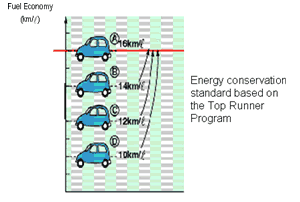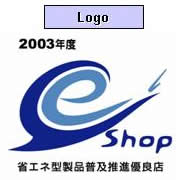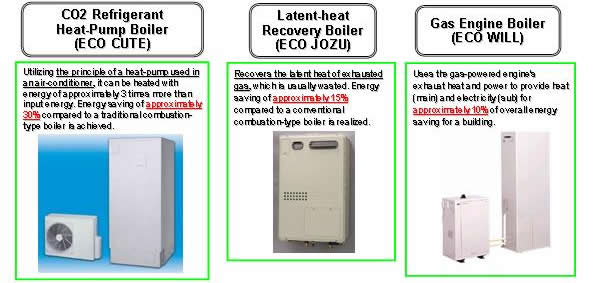II-3. Energy Conservation Measures for the Commercial/Residential Sector
- The Top Runner Program* was introduced in 1998 for the energy conservation standards for home/office appliances and the fuel economy standard of automotives. The program standards for LCD and plasma televisions and heavyweight vehicles are to be added.

*Top Runner Program:
|
|||||||||||||||||||||||||||||||||||||||||||||||||||||||||||||||||||||||||||||||||||||||
Energy-Conservation Target for Specific Equipment
The energy conservation effect is as compared with that of FY1997 (and as compared with FY1995 for automobiles, and FY1998 for electric refrigerators/freezers).
|



